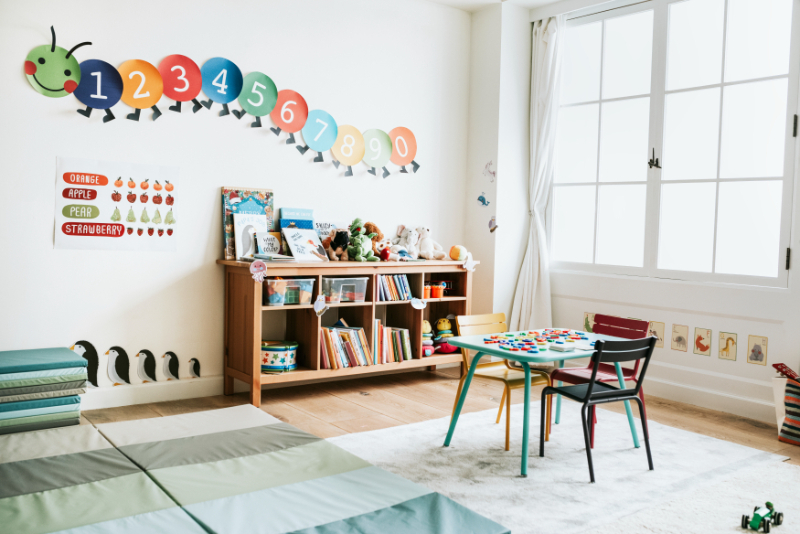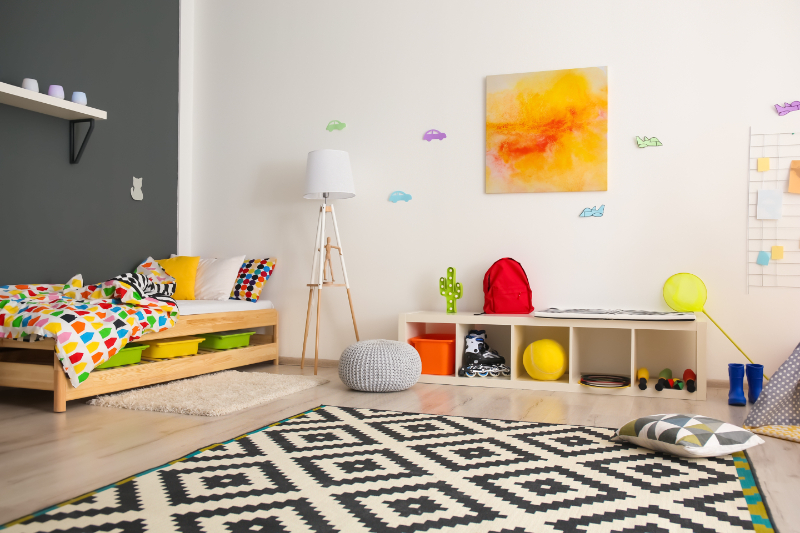Planning a playroom conversion? Discover key factors to consider when planning a playroom conversion, including safety features, storage solutions, layout ideas, and child-friendly designs. Create a fun and functional space for your children to play, learn, and grow.
Design That Appeals to Children
When considering a playroom conversion, it is essential to create a child-friendly and imaginative environment. Start by asking your children about their preferences and favourite themes.
Incorporating their favourite colours, characters, or themes can make the room more personal and enjoyable for them. Use playful and bright paint on the walls to foster a fun atmosphere.
The choice of furniture is also crucial. Select pieces that are both safe and functional. Low tables, colourful chairs, and small bookshelves are excellent options. A cosy area with bean bags or cushions can provide a space for relaxation.
Ensure there is ample open space for playing to allow children to move freely and engage in various activities. Lighting plays a significant role in a playroom. Maximise the use of natural light whenever possible and complement it with soft, warm artificial lighting.
Fun and creative light fixtures can add an extra touch of charm to the room. Another important aspect to consider is the flooring. Opt for soft carpets or play mats to make the room more comfortable and safe. These options can provide cushioning for any falls and make playing on the floor more enjoyable. Storage solutions are essential in keeping the playroom organised.
Incorporate bins, shelves, and baskets to store toys, books, and games. Labelling these storage units can help children learn to tidy up after themselves.Wall decorations, such as murals or posters, can add a personal touch to the playroom.
Consider adding a chalkboard or whiteboard for drawing and creativity. By keeping these design elements in mind, you can create a delightful and inviting playroom that your children will love. The space should be a place where they can play, learn, and let their imaginations run wild.
Think About Safety
Safety is always a top priority when converting a room into a playroom. Start by checking the room for any sharp edges or dangerous objects. Cover any electrical outlets and secure cords to prevent trips and falls. If the room has windows, make sure they have secure locks and consider installing safety glass if necessary.Furniture should be sturdy and stable.
Avoid pieces that can topple over easily, and secure taller furniture to the wall. Soft edges on tables and shelves can prevent injuries. Think about the placement of furniture too; make sure there's plenty of space for kids to move around without bumping into things.
Check that toys are age-appropriate and free from small parts that could be a choking hazard. Store heavy toys on lower shelves to prevent them from falling. Regularly inspect toys for any broken parts and remove anything that could be harmful.
Fire safety is another key area. Install smoke detectors if the room doesn't already have them and make sure you regularly check the batteries. Keep any flammable materials, such as curtains, away from heat sources. If the playroom is an extension of your home, like a garden office, double-check building regulations to ensure it meets safety standards.

Lastly, think about the flooring. Soft mats or carpets can cushion falls and make the room more comfortable. Avoid rugs that can easily slide or cause trips. By thoroughly thinking about safety when planning your playroom conversion, you can create a secure environment where your children can play and explore freely.
Consider Storage
Storage is an important thing to consider when converting a room into a playroom. Kids come with a lot of stuff, from toys to books to craft materials. Effective storage solutions can keep the room organised and clutter-free.
Start by thinking about accessible storage for your children. Low shelves and bins make it easy for them to grab their toys and put them away after they’re done playing. Labelled bins can also help kids learn where things go.
Consider multi-functional furniture like toy chests that double as benches. These provide extra seating while also giving you space to store toys. Wall-mounted shelves can save floor space and are perfect for displaying books or lighter toys.
Clear storage bins can be a great choice because they allow kids to see what's inside, making it easier to find their favourite things. For a softer look, fabric bins can add colour and texture to the room while still providing ample storage space.
Lastly, think about a storage plan that will grow with your children. Modular storage systems can be reconfigured as their needs change. Good storage solutions will help keep the playroom tidy, making it a functional and enjoyable place for your family.
Carpet or Hard Flooring
When converting a room into a playroom, flooring is an important consideration. Both carpet and hard flooring have their pros and cons, so you’ll need to decide which one is best for your needs.
Carpet can make a playroom feel warm and cosy. It’s soft, which is great for young children who spend a lot of time on the floor. The carpet can help cushion falls and is comfortable for sitting and playing. However, it can be harder to clean if there are spills or accidents. Choose a carpet that is stain-resistant to make maintenance easier.
On the other hand, hard flooring like wood, laminate, or vinyl is easier to clean and can be more durable in the long run. Hard flooring is great for robust play and is less likely to show wear and tear over time. You can always add area rugs or foam play mats to provide some softness and comfort underfoot.
Think about the activities that will take place in the playroom. If it’s a space where kids will do a lot of arts and crafts, hard flooring might be more practical. If it's mainly for reading and quiet play, carpet could be the better choice. Both types of flooring have their benefits, so weigh your needs and choose what works best for your family.

Colour Scheme
When planning a playroom conversion, choosing the right colour scheme can make all the difference. The colours you choose can affect not only the look of the room but also how your children feel when they spend time there.
Bright, vibrant colours can create an energetic, fun atmosphere. Think about using bold primary colours like red, blue, and yellow. These can be used on walls, furniture, or even accessories. If you want something a bit more subtle, pastel colours are also a good choice and can make the room feel calm and soothing.
Consider using a mix of colours rather than just one. You could paint one wall in a bright colour to create a focal point and keep the rest of the walls neutral. Wall decals or murals can also add a fun element without committing to a bright colour on every wall.
Another thing to think about is how the colour scheme fits with the rest of the house. If your home has a certain style or colour palette, you might want your playroom to complement this. This way, the playroom won’t feel out of place.
Also, remember that children’s tastes change over time. Opting for a more flexible colour scheme can be a good idea. Neutral walls with colourful accessories like rugs, cushions, and artwork can be easily updated as your kids grow and their preferences change.
Finally, involve your children in the colour selection process. They will enjoy the room more if they’ve had a hand in its creation. Choosing a thoughtful colour scheme can help make the playroom a fun and inviting space where your children will love to play.
A well-chosen colour scheme can also promote better mood and behaviour. For example, too much red might make a child feel overstimulated, while too much blue could be too calming.
A balance is key. Look for combinations that can offer both stimulation and relaxation. Lighting is also important. Natural light can make colours appear more vibrant, so consider the room's orientation and how much daylight it receives.
Complementary artificial lighting can enhance the chosen colours, ensuring the space is always inviting. Ultimately, the goal is to create a space where your children feel happy and comfortable. By carefully considering your colour choices, you can create a playroom that feels both engaging and restful, balancing fun and functionality.
Are you planning a playroom conversion in Birmingham, Coventry, Nuneaton and West Midlands? If you are planning a renovation, you will want to discover if it is viable to do so. Ask our local expert today for a quotation.
If you require more information about planning applications before you start work, don't hesitate to contact our team today.


